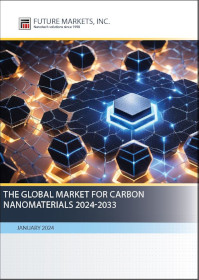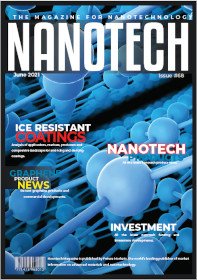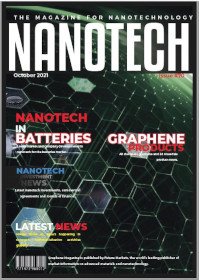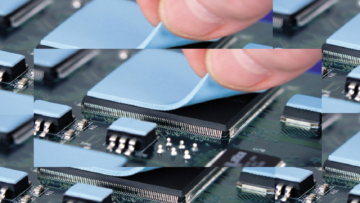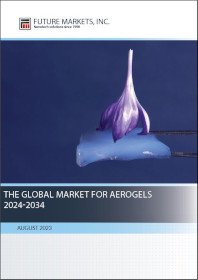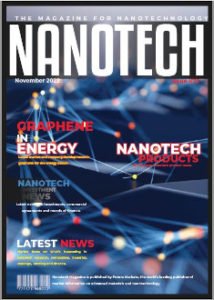
Published August 2023 | 135 pages, 13 figures, 49 tables | Download Table of contents
Cutting-Edge Solid-State Cooling Technologies Offer Compact, Efficient Thermal Management
With rising power densities across sectors like electronics, automotive and directed energy, traditional vapor compression cooling is hitting limitations. Innovative solid-state cooling technologies that leverage unique properties of materials and nanostructures provide transformative cooling solutions without refrigerants.
These solid-state coolers pump and transfer heat through solid-state interactions and effects such as thermoelectric, thermionic, magnetocaloric, electrocaloric, and optical refrigeration. Materials used include semiconductors, ceramics, alloys and nanostructures. Promising solid-state cooling technologies include:
- Thermoelectric coolers using semiconductors to electromagnetically pump heat.
- Thermotunneling coolers that leverage nanoscale gaps and quantum tunneling to transfer heat.
- Optical refrigerators which use laser light to induce cooling through anti-Stokes fluorescence.
- Refrigerators that utilize light emitting diodes (LEDs) as the cold side of a thermoelectric cooler.
- Thermoacoustic refrigeration harnessing high intensity sound waves in gases to produce cooling without fluids or gases.
- Magnetic refrigeration utilizing magnetocaloric materials and magnetic field cycling.
Passive technologies like heat pipes and advanced heat exchangers provide complementary high performance heat spreading and heat transfer solutions.
Some of the key focus areas covered in the report include:
- In-depth technical analysis of cooling approaches:
- ThermoelectricCoolers
- Thermophotonic (TPX) Coolers
- Thermotunneling Coolers
- Acoustic/thermoacoustic Cooling
- Magnetic Cooling
- Photonic Cooling
- Optical refrigerators
- Thermoelastic Cooling
- Electrocaloric Cooling
- Thermionic Cooling
- Barocaloric Cooling
- Thermal Diodes.
- Working principles, designs, materials used
- Fabrication processes and manufacturing approaches
- Performance metrics like cooling capacity, efficiency, operating temperatures
- Current technical challenges and limitations
- Recent research trends and developments
- Applications and End-Use Sectors covered include:
- Electronics cooling
- Microprocessors, power electronics, LEDs
- Consumer devices, data centers, avionics
- Optoelectronics
- Lasers, detectors, IR cameras
- Automotive sector
- Seat climate control, battery thermal management
- Sensors, LIDAR, infotainment systems
- Aerospace
- Avionics Cooling, Cryogenic Systems
- Satellite Thermal Control, Laser cooling, Thermal Protection Systems
- Medical
- Food and beverage cooling
- Gas liquification, cryogenics
- Emerging application areas
- Electronics cooling
- Current market size estimates and forecasts to 2034
- Adoption trends across application segments
- Regional analysis: North America, Asia Pacific, Europe, RoW
- Industry landscape:
- Key players
- SWOT analysis
- Market value chain.
- Growth opportunities and strategic recommendations
- Challenges: technical, commercial, regulatory
- Profiles of 24 product developers. Companies profiled include Barocal Ltd,, Ferrotec, Frore Systems, Komatsu, Laird Thermal Systems, and Phononic Inc.
Some of the key questions addressed in the report include:
- What are the major solid state cooling technologies and what are their principles of operation?
- What are the performance metrics like efficiency, cooling capacity and operating temperatures?
- What are the current application areas and adoption trends for solid state coolers?
- What are the benefits of solid state cooling versus traditional vapor compression systems?
- What are the major challenges and limitations of solid state cooling technologies?
- Which solid state cooling technologies show the most promise for future adoption?
- What are the projected market sizes for solid state cooling over the next 5-10 years?
- Who are the key players developing solid state cooling devices?
- What are emerging application areas which can benefit from solid state cooling?
- What are the strategic recommendations for companies in the solid state cooling ecosystem?
The Global Market for Solid-State Cooling 2024-2034 serves as a comprehensive guide for stakeholders interested in understanding various solid-state cooling approaches, their capabilities, applications across industries, and market outlook. The report aims to provide guidance on leveraging solid state cooling to engineers, researchers, investors, and corporate strategists.
PDF and print edition (including tracked delivery).
Payment methods: Visa, Mastercard, American Express, Paypal.
To purchase by invoice (bank transfer) or in an alternative currency please contact info@futuremarketsinc.com or select Bank Transfer (Invoice) as a payment method at checkout.
PDF and print edition (including tracked delivery).
Payment methods: Visa, Mastercard, American Express, Paypal.
To purchase by invoice (bank transfer) or in an alternative currency please contact info@futuremarketsinc.com or select Bank Transfer (Invoice) as a payment method at checkout.
- SEO Powered Content & PR Distribution. Get Amplified Today.
- PlatoData.Network Vertical Generative Ai. Empower Yourself. Access Here.
- PlatoAiStream. Web3 Intelligence. Knowledge Amplified. Access Here.
- PlatoESG. Automotive / EVs, Carbon, CleanTech, Energy, Environment, Solar, Waste Management. Access Here.
- PlatoHealth. Biotech and Clinical Trials Intelligence. Access Here.
- ChartPrime. Elevate your Trading Game with ChartPrime. Access Here.
- BlockOffsets. Modernizing Environmental Offset Ownership. Access Here.
- Source: https://www.nanotechmag.com/the-global-market-for-solid-state-coolers-2024-2034/?utm_source=rss&utm_medium=rss&utm_campaign=the-global-market-for-solid-state-coolers-2024-2034
- :is
- 13
- 2023
- 24
- 49
- a
- across
- active
- Adoption
- advanced
- aims
- alternative
- america
- American
- American Express
- an
- analysis
- and
- Application
- applications
- approaches
- ARE
- areas
- AS
- asia
- asia pacific
- At
- AUGUST
- automotive
- Bank
- bank transfer
- battery
- benefit
- benefits
- BEVERAGE
- by
- CAN
- capabilities
- Capacity
- Centers
- chain
- challenges
- Checkout
- Climate
- cold
- commercial
- Companies
- complementary
- comprehensive
- contact
- control
- Corporate
- covered
- cryogenic
- Currency
- Current
- data
- data centers
- delivery
- designs
- developers
- developing
- Devices
- directed
- download
- ecosystem
- edition
- effects
- efficiency
- efficient
- Electronics
- emerging
- energy
- Engineers
- estimates
- Europe
- exchangers
- express
- field
- Figures
- Focus
- For
- forecasts
- from
- future
- gaps
- Global
- global market
- guidance
- guide
- Harnessing
- High
- hitting
- HTTPS
- in
- include
- Including
- industries
- innovative
- interactions
- interested
- Investors
- jpg
- Key
- landscape
- laser
- Leverage
- leveraging
- lidar
- light
- like
- limitations
- Ltd
- magazine
- Magnetic field
- major
- manufacturing
- Market
- market outlook
- mastercard
- materials
- method
- methods
- Metrics
- most
- next
- North
- north america
- of
- offer
- on
- operating
- operation
- opportunities
- optical
- or
- Outlook
- over
- Pacific
- pages
- payment
- payment method
- PayPal
- performance
- pipes
- plato
- Plato Data Intelligence
- PlatoData
- players
- please
- please contact
- power
- principles
- processes
- produce
- Product
- projected
- promise
- promising
- properties
- protection
- provide
- pump
- purchase
- Quantum
- Questions
- recommendations
- report
- research
- researchers
- rising
- sector
- Sectors
- Semiconductors
- serves
- show
- side
- Size
- sizes
- solid
- Solutions
- Sound
- Spreading
- stakeholders
- State
- Strategic
- such
- Systems
- table
- Technical
- Technical Analysis
- Technologies
- that
- The
- their
- thermal
- Through
- to
- traditional
- transfer
- transformative
- Trends
- understanding
- unique
- use
- used
- using
- utilize
- Utilizing
- value
- various
- Versus
- visa
- waves
- What
- which
- without
- years
- zephyrnet



